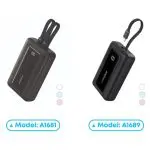Korean gaming company Pulsar crammed a tiny Austrian fan inside a computer mouse to solve the age-old problem of sweaty palms ruining competitive gamers’ perfect aim.
Pulsar partnered with Austrian cooling specialist Noctua to create the Feinmann x Noctua Edition. The mouse features a 40mm Noctua fan visible through its honeycomb shell design. The collaboration was announced at Computex 2025 in Taiwan this month.

Source: Noctua x Pulsar
The fan targets a specific problem in competitive gaming. Sweaty palms can make mice slippery and reduce accuracy during intense matches.
“We’re thrilled to unveil our latest collaboration with Noctua — the Feinmann, now equipped with a 4×4 cm Noctua fan inside,” Pulsar Gaming Gears stated on social media. The company praised Noctua’s “exceptional cooling performance and ultra-quiet operation.”
Noctua insisted the product is “not just a gimmick”. Early testers at Computex found the cooling effect “surprisingly nice,” noted Jacob Ridley from PCGamer.
However, the fan addition creates clear trade-offs. The new mouse weighs 65 grams compared to the original Feinmann’s 46 grams. Battery life drops significantly to 10-11 hours, far below the 100+ hours typical wireless gaming mice provide.
The mouse maintains competitive gaming features. It includes a 32,000 DPI sensor, 8,000 Hz polling rate, and 50G acceleration. The magnesium shell design allows airflow to reach users’ palms while keeping the fan noise at just 17.9 decibels.
Pricing reflects the specialized nature. The standard Feinmann F01 costs $179, while the Noctua version is expected to exceed $200 when it launches in November 2025.
Critics question whether the benefits justify the drawbacks. The original Feinmann’s appeal centered on its ultra-light 46-gram weight. Adding nearly 20 grams for cooling functionality changes the mouse’s core advantage.
Similar fan-equipped mice exist but remain rare. The Zephyr Pro offered comparable features, but such products have failed to gain mainstream adoption. Gaming peripheral buyers typically prioritize traditional performance metrics over comfort features.
This collaboration represents Noctua’s expansion beyond traditional PC cooling applications. The company has partnered with graphics card makers and other hardware manufacturers, leveraging its reputation for quiet, effective fans.
Early prototypes suggest the technology works as intended. Whether enough gamers value cool palms over longer battery life and lighter weight will determine the product’s success when it reaches stores this fall.



















